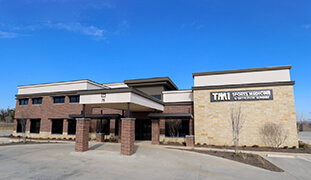
What is Spinal Stenosis?
Degeneration of the facet joints and intervertebral discs that connect vertebrae to one another results in narrowing of the spinal canal, known as spinal stenosis. In addition, the arthritic facet joints become bulkier and consume the space existing for the nerve roots. Besides, thickened ligaments and bony out growths also known as bone osteophytes or bone spurs can also narrow the spinal canal.
The condition of spinal stenosis, narrowing of the spinal canal, puts pressure on the spinal nerves and spinal cord, causing symptoms such as neck pain, tingling sensation, numbness or weakness that extends to the shoulders, arms and/or hands and bowel or bladder impairment.
What is Cervical Laminoplasty?
A cervical laminoplasty is an operative procedure that involves reshaping/repositioning the bone at the neck region (cervical spine) to relieve excess pressure on the spinal nerves. It can also be performed to relieve the symptoms of narrowed spinal canal known as spinal stenosis.
Laminoplasty involves repositioning or reshaping of the lamina (roof), unlike laminectomy which involves removal of the lamina. The objective of cervical laminoplasty is to relieve pressure on the spinal nerves by removing the source of pressure without disturbing the stability of the posterior elements of the vertebrae.
This procedure is also called an “open door laminoplasty,” because it involves “hinging” one side of the vertebrae and cutting the other side forming a “door”, which is opened and placed with wedges made up of bone and instrumentation.
Your surgeon recommends you for cervical laminoplasty after examining your spine, medical history, and imaging results of cervical vertebrae such as X-ray, CT scan or MRI.
Indications of Cervical Laminoplasty
Surgery is recommended only after non-surgical treatment approaches fail to relieve symptoms after a reasonable period.
Cervical Laminoplasty Procedure
The procedure is performed with you resting on your stomach and injected with sleep inducing medication (general anesthesia). Your surgeon makes a small incision near the center of your neck on the back side, and approaches the neck bones (cervical vertebrae) by moving the soft tissues and muscles apart. The spinal processes of the vertebra are removed. Then, a side of the cervical vertebra is cut making a “hinge” and later the other side is also cut allowing the bones to open like a “door”. The back of each vertebra is bent back to remove pressure on the spinal structures such as spinal cord and spinal nerves. Other compression sources such as bone spurs, excess ligaments and/or disc fragments (discectomy) are also removed. Small wedges are placed in the “open” space of the door and sealed with proper instrumentation. After the procedure, your surgeon brings back the soft tissues and muscles to their normal place and closes the incision.
Post-operative Instructions following Cervical Laminoplasty Procedure
A specific postoperative recovery/exercise plan will be given by your physician to help you return to normal activity at the earliest. After surgery, your symptoms may improve immediately or gradually over the course of time. The duration of hospital stay depends on this treatment plan. In a few instances, surgery may also be performed on an outpatient basis. You will be able to wake up and walk by the end of the first day after the surgery. Your return to work will depend on your body's healing status and the type of work/activity that you plan to resume. Discuss with your spinal surgeon and follow his instructions for optimized healing and appropriate recovery after the procedure.
Risks and Complications of Cervical Laminoplasty Procedure
Treatment results are different for each patient. All surgeries carry risk and it is important to understand the risks of the procedure to make an informed decision to go ahead with the surgery. In addition to the anesthetic complications, spinal surgery is associated with some potential risks such as infection, blood loss, blood clots, nerve damage, and bowel and bladder problems. Failure to fuse the vertebral bones with the bone graft (fusion failure) is an important complication of spinal fusion which requires an additional surgery.










